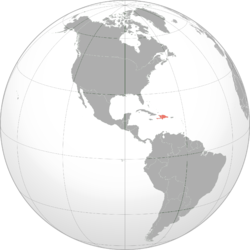
Natalidae is one of the twenty families of bats in the mammalian order Chiroptera and part of the microbat suborder. Members of this family are called natalids or funnel-eared bats. They are found in South America, Central America, and the Caribbean, in forests and caves. The majority of species in the family do not have size estimates, though those that do range in size from the Mexican greater funnel-eared bat, at 3 cm (1 in) plus a 4 cm (2 in) tail, to the Jamaican greater funnel-eared bat, at 6 cm (2 in) plus a 6 cm (2 in) tail. Like all bats, natalids are capable of true and sustained flight, and have forearm lengths ranging from 3 cm (1 in) to 5 cm (2 in). They are all insectivorous. [1] No natalids have population estimates, though the Jamaican greater funnel-eared bat is categorized as critically endangered.
Contents
The eleven extant species of Natalidae are divided into three genera: Chilonatalus, with three species; Natalus, with seven species; and Nyctiellus, with a single species. A few extinct prehistoric natalid species have been discovered, though due to ongoing research and discoveries the exact number and categorization is not fixed. [2]








